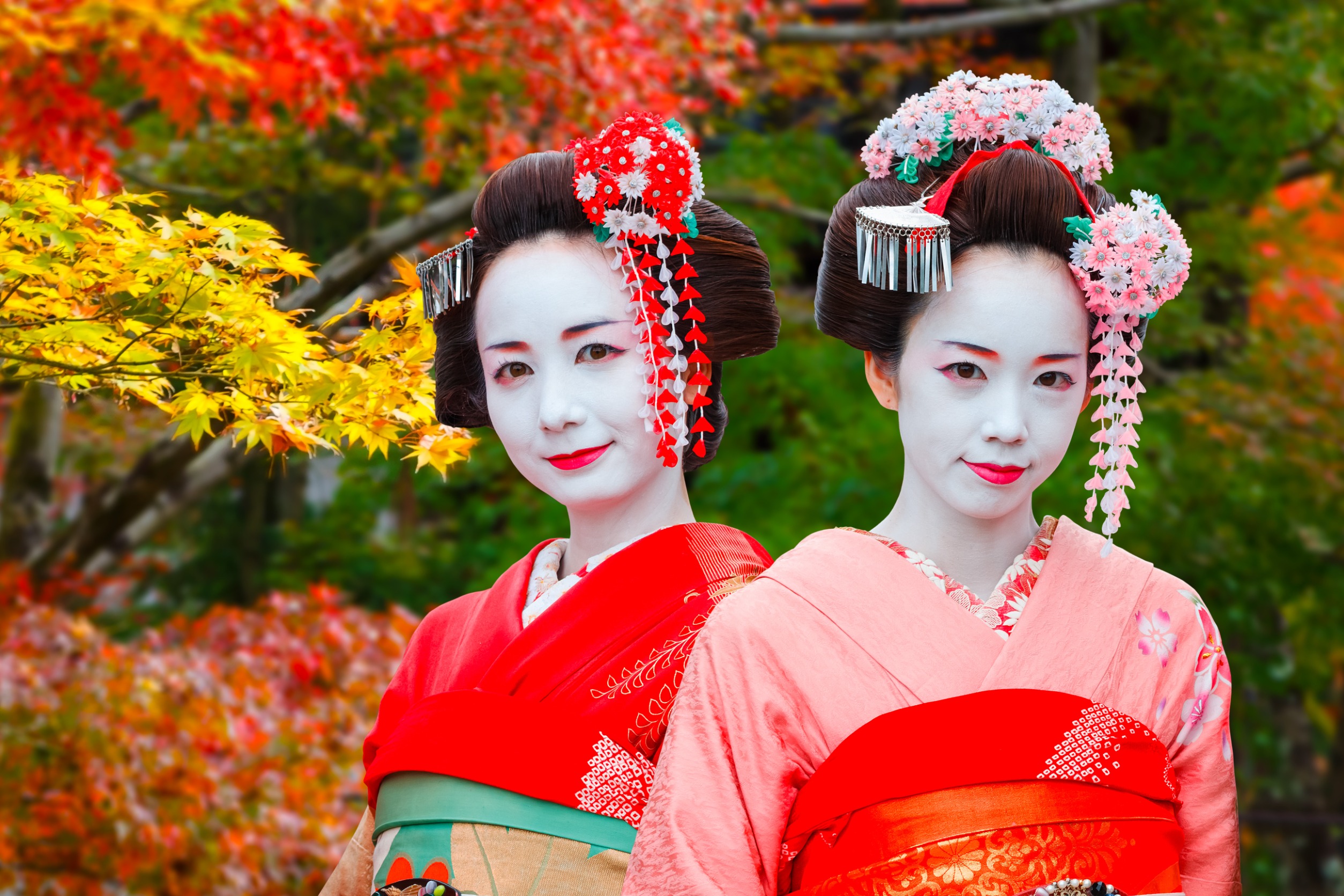Difference between Maiko, Geisha and Geiko

Difference between Maiko, Geisha and Geiko
Maiko vs. Geisha vs. Geiko
A maiko is generally a woman between the ages of 15 and 20 before becoming a geiko, and is considered to be a part of culture and tradition unique to Kyoto. A maiko is trained as an apprentice of geiko for about five years between the ages of 15 and 20, after which she may becomes a geiko. A maiko’s job is to enliven a banquet by performing arts such as singing and dancing in the Gion area of Kyoto and other Hanamachi districts.
Geiko is sometimes called “geisha” outside of Kyoto. Geisha and geiko are the same thing, they are just called differently depending on the regions.
Maiko vs. Geiko
You can distinguish a maiko from a geiko by their appearance.
A geiko wears regular kimono of chic colors such as black and dark blue. A maiko wears a long furisode kimono in colors such as pale pink.
Maiko walk in “pokkuri,” which are about 10 cm high, while geiko wear regular Japanese traditional “zori” sandals. If you see a maiko and geiko walking side by side with, you will notice that the maiko will appear much taller than the geiko.
A geiko’s hair is either a full wig with no ornamentation or a wig with a simple comb such as tortoiseshell.
A maiko wears her hair tied up with her natural hair and a gorgeous hairpin, so if you were to walk through Kyoto’s Hanamachi (leisure) district, you would instantly recognize a maiko. Maiko also wears a number of gorgeous hairpins to give a childlike impression.
A maiko who wears her own hair must keep it long, but a geiko can keep her hair short.
Differences between the Roles of a Maiko and a Geiko
Both maiko and geiko have the same basic job of enlivening the banquet, but the way they enliven the banquet is a little different. A maiko is in charge of booting the banquet mood, sometimes in a young and playful way. On the other hand, geiko is in charge of reading and moving the flow of the entire banquet.
During the five years of training as an apprentice, a maiko will learn dance, tea ceremony, and etiquette in banquets. Only after gaining experience while being an apprentice, a maiko can become a geiko.
They must have a proper understanding of the etiquette in the banquet and have special skills such as dancing and shamisen (musical instrument). A maiko working in Kyoto’s Hanamachi district decides for herself whether or not she will become a geiko before she turns 20 years old.
There is no age limit on how long one can remain a geiko. Since there is no age limit, unlike the case with maiko, which require childlike characteristics, one can be a geiko for as long as she likes.
While maiko are not paid as “wages” due to their apprenticeship status, geiko are able to earn wages and lead a self-supporting life.
A maiko lives in an Okiya (maiko house), which is both a training school and an office, where she learns singing, Japanese dance, shamisen, and other arts, and trains daily to become a geiko. Only after becoming a geiko, she will be paid for her services. After leaving the Okiya, a geiko must take personal responsibility for her own life and work.
Can geiko/geisha get married?
Geiko/geisha is forced to stop working when she marries.










